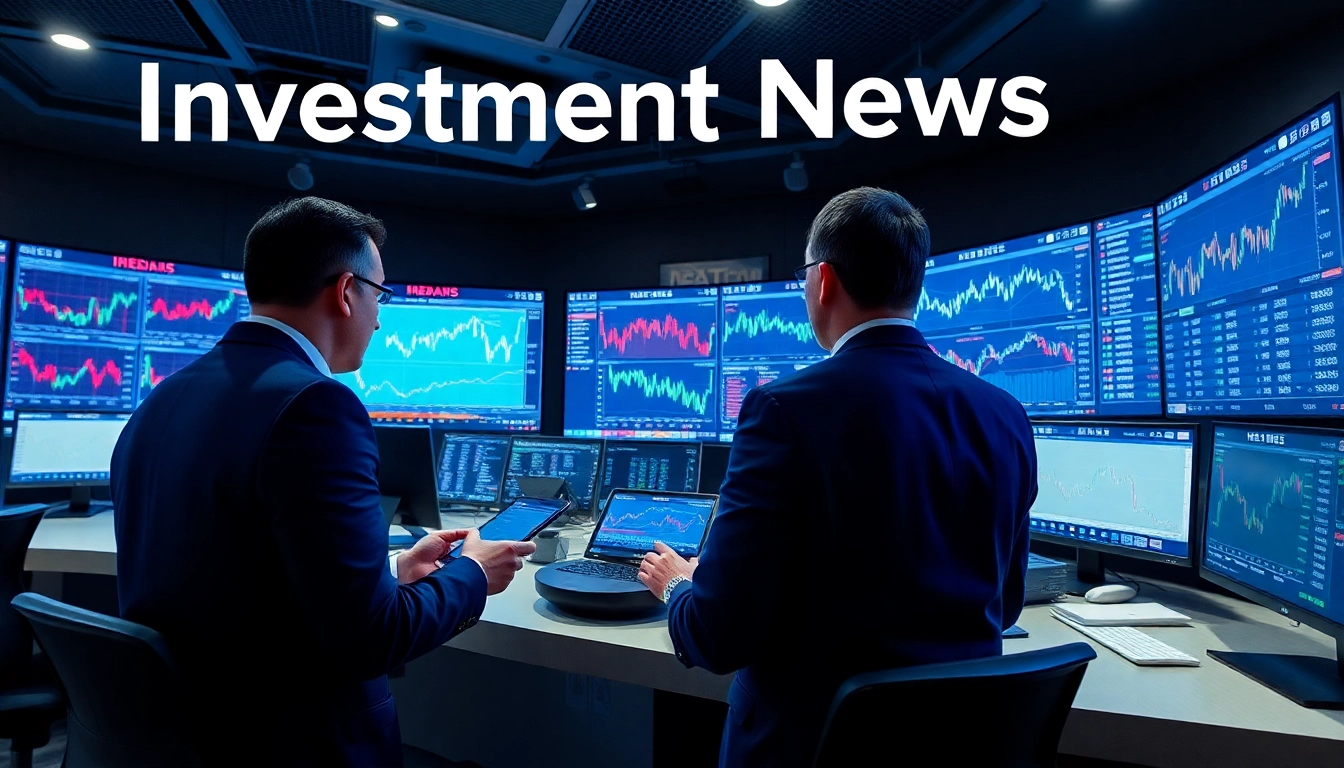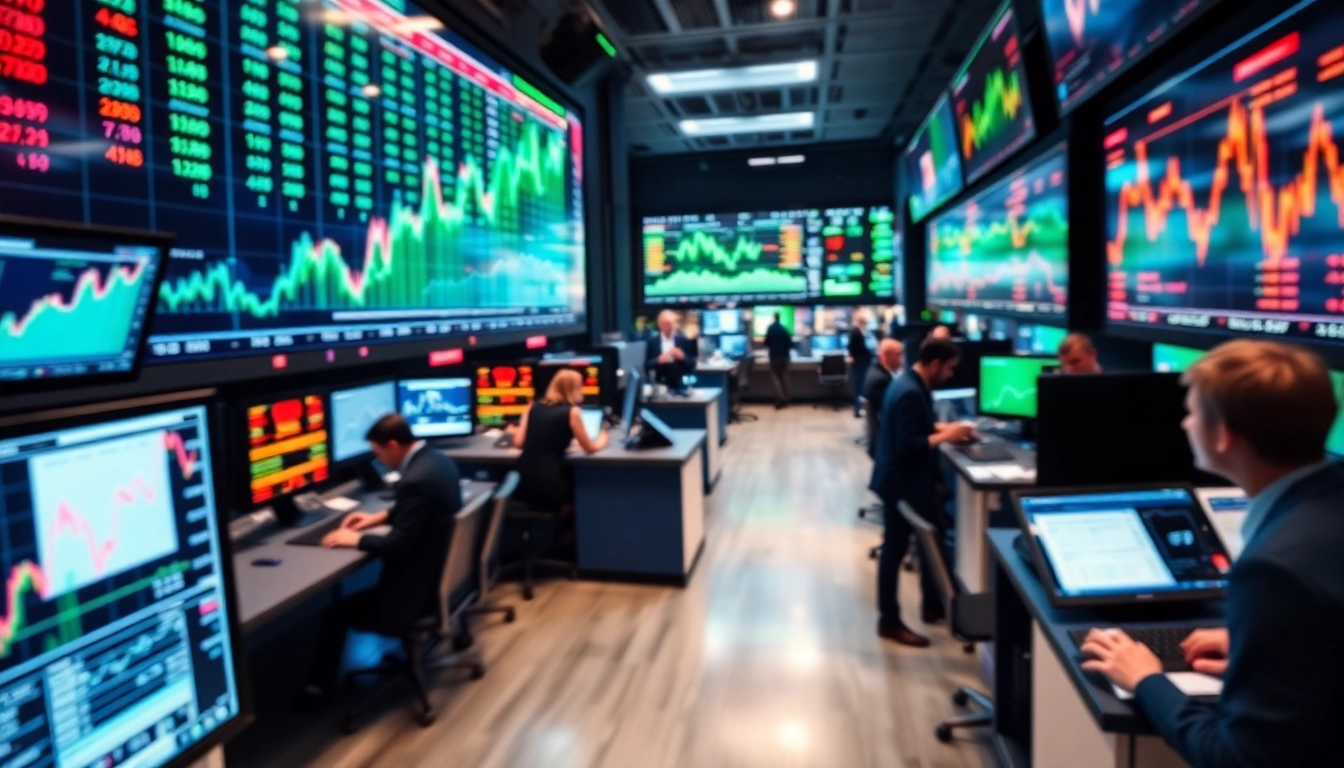The financial landscape continues to demonstrate its dynamic nature, influenced by a complex interplay of economic indicators, geopolitical developments, and technological innovations. Recent Investment News highlights a mixed performance across global markets, with stock indices oscillating, gold reaching unprecedented levels, and currency movements shaping investor strategies. This article provides a comprehensive analysis of current market trends, key factors driving investment headlines, sector-specific insights, and strategic considerations for investors aiming to navigate the evolving terrain effectively.
Understanding Current Market Trends in Investment News
Market overview: Why stock markets are fluctuating
Recent market activity illustrates a landscape characterized by volatility and cautious optimism. European equities, exemplified by the pan-European STOXX 600, marginally increased by 0.17%, reflecting investor sentiment dampened by geopolitical tensions and economic uncertainty. Meanwhile, US futures remain steady amidst anticipation of labor data, which could further influence Federal Reserve’s monetary policies. The ongoing discord between global economic recovery narratives and inflation concerns creates a seesaw effect, inducing prevalent fluctuations. Such dynamics underscore the importance for investors to stay vigilant and diversify broadly, considering both risks and opportunities.
Moreover, market reactions to US political discourse, including calls for Federal Reserve chair resignations, exemplify how political developments can dynamically influence asset prices. For instance, recent comments by US officials have led to dollar fluctuations and shifts in bond yields. Understanding these immediate reactions aids investors in predicting short-term market movements, especially when paired with technical analysis of key trendlines such as the 200-week moving average in cryptocurrencies like Bitcoin, which remains a crucial indicator for long-term bullish or bearish turns.
Gold prices hitting record highs: Factors and implications
Gold has achieved a new all-time record of $3,501.59 per ounce, surpassing the previous high of $3,500.10 in April. Several factors contribute to this surge. Primarily, heightened geopolitical tensions, including US-China trade uncertainties and the extension of tariffs, drive investors toward safe-haven assets. Additionally, dovish monetary expectations amid hopes for US rate cuts bolster gold’s appeal, as lower interest rates reduce the opportunity cost of holding non-yielding assets.
Inflation data from the US also plays a pivotal role. When inflation remains persistent or accelerates unexpectedly, gold tends to attract more investment as a hedge. Analysts note that the current US inflation figures, coupled with cautious Federal Reserve signals, favor continued upward momentum for this precious metal. For investors, gold’s record levels signify a strategic buffer against market volatility, but also pose questions about potential profit-taking and correction risks. Long-term outlooks suggest gold will remain a key component in diversified portfolios, especially if geopolitical frictions intensify.
Currency movements and their impact on investments
Currency markets have experienced notable shifts, impacting international investment strategies. The US dollar has seen a slight decline of 0.04% against the yen, with the euro gaining 0.25%. This fluctuation is partly driven by expectations of lower US interest rates and global risk appetite shifts. A weaker dollar can benefit commodities priced in USD, such as oil and gold, spurring their respective price increases.
Emerging market currencies, including the Australian dollar and Asian regional units, also trade higher, bolstered by hopes of US rate cuts and regional economic data. For international investors, these movements influence cross-border trade, currency hedging strategies, and valuation models. For instance, a depreciating dollar makes US exports cheaper but can erode foreign holdings when repatriated. Expert recommendations emphasize staying aligned with macroeconomic indicators and employing currency hedging tools to mitigate adverse effects.
Key Factors Shaping Investment News Headlines
Economic indicators influencing global markets
Economic metrics such as US employment data, inflation rates, and GDP growth continue to steer market sentiment. The upcoming US labor report is particularly pivotal; a strong report could reinforce expectations for US rate hikes, while weaker figures might fuel rate cut speculation. Similarly, China’s economic data, indicative of slowing industrial output, impacts global commodity prices, especially iron ore futures, which have slipped amid weak Chinese demand.
Manufacturing indices, consumer confidence levels, and retail sales figures collectively shape the macroeconomic environment, guiding central bank policies and investor positioning. Understanding the nuances of these indicators enables market participants to anticipate potential shifts, whether it’s a rally in equities or a flight into safer assets like bonds and gold.
Policy decisions and geopolitical events affecting stocks and commodities
Recent policy developments include the Bank of England’s stern warning to Facebook regarding the UK’s Libra cryptocurrency, signaling regulatory tightening that may influence fintech and digital currency markets. Geopolitical tensions, such as US-China trade negotiations and tariffs, continue to cast a shadow over global commerce, notably impacting oil prices, which have declined but are set for weekly gains due to extended supply management policies.
Furthermore, upcoming elections, legislative reforms, and international sanctions can swiftly alter the investment landscape. For example, the liquidation of assets from firms like Evergrande, along with restrictions on crowdfunding platforms and reinsurance operations, illuminates risks in corporate debt and financial stability sectors. Consequently, vigilant monitoring of policy signals is essential for safeguarding portfolios and capitalizing on emerging opportunities.
Role of central banks and interest rate forecasts
Central banks’ monetary policy outlooks heavily influence market trajectories. The anticipation of US Federal Reserve interest rate cuts has led to a weaker dollar and increased risk appetite, benefiting equities and commodities. Conversely, hawkish signals or unexpected inflation upticks may trigger rate hikes, leading to bond sell-offs and dollar strengthening.
Similarly, European and Asian central banks are adjusting policies in response to regional economic conditions. In particular, the Bank of England’s inputs on regulatory conditions for digital currency releases highlight a cautious yet progressive stance that can stimulate industry innovation while maintaining financial stability.
Strategically, investors should align their asset allocation with these policy cues, keeping a close eye on official statements, interest rate futures, and economic releases that could enforce or overturn current trends.
Deep Dive: Analyzing the Stock Market Performance
European shares and FTSE rebounds: What investors should know
European markets, with indices like the FTSE and STOXX 600, demonstrated resilience amid global uncertainties. Defense stocks and specific sectors championed gains, supported by geopolitical tensions and strategic defense investments. The marginal rise indicates investor confidence in certain sectors, even when overall macroeconomic sentiment remains cautious.
Investors should explore sector-specific opportunities, especially in defense or technology, leveraging insights from recent corporate earnings, regulatory developments, and innovation trends. Employing technical analysis tools, such as trendline support at critical levels, can enhance timing entries and exits.
US stock futures and the influence of U.S. labor data
US futures exhibit stability, yet the trajectory heavily depends on labor market data. Strong employment reports could bolster the dollar and push equities higher, whereas weaker numbers might intensify dovish expectations, leading to increased bond prices and gold gains. Historically, employment data serve as a reliable predictor of Federal Reserve policies, affecting interest rate projections and thus, asset prices.
Investors should prepare for volatility around these data releases by employing risk management strategies such as options hedging and diversification across asset classes.
Emerging market trends and sector-specific picks
Emerging markets continue to showcase growth opportunities, particularly in sectors like mining and advanced manufacturing. The recent rebound in mining stocks correlates with price improvements in commodities like iron ore and oil, as geopolitical tensions and demand shifts influence supply-demand dynamics.
Regionally, Asia’s stock indices have risen on hopes of U.S. rate cuts, while currency movements further support export-oriented sectors. Sector rotation into defensive stocks and commodities may remain advantageous during periods of global uncertainty.
Investment Strategies Based on Latest Investment News
Balancing risk with gold and cryptocurrencies
In current turbulent conditions, gold has proven its merit as a safe haven, with record-breaking prices reflecting heightened geopolitical and economic uncertainty. Cryptocurrencies, especially Bitcoin, remain volatile but present opportunities for strategic positioning, especially if Bitcoin maintains support at key trendlines like the 200-week moving average.
Fundamentally, diversifying into tangible assets such as gold, along with well-researched cryptocurrency holdings, can mitigate risks associated with equity and currency fluctuations. Investors should consider dollar-cost averaging and setting stop-loss orders to manage exposure effectively.
Leveraging market volatility for profitable trades
Market volatility, while risky, offers premium opportunities for active traders. Utilizing technical tools such as support/resistance levels, moving averages, and volatility indices (VIX) can enhance trade timing. Short-term strategies like swing trading or options spreads can capitalize on known event-driven movements, such as economic releases or geopolitical developments.
Longer-term investors should focus on maintaining flexibility, reassessing portfolios periodically, and avoiding over-leveraging during uncertain periods.
Long-term vs short-term investment approaches during market fluctuations
Balancing long-term fiduciary goals with tactical short-term moves is crucial. While long-term investors should prioritize diversified holdings in gold, equities, and growth sectors, short-term traders might exploit volatility swings for gains. Maintaining discipline, setting clear risk parameters, and staying informed through authoritative sources can foster resilience amidst fluctuating conditions.
Investment discipline combined with adaptive strategies positions investors to benefit from both cycle peaks and troughs effectively.
Future Outlook and Key Takeaways from Investment News
Predicted trends in commodities and currency markets
Commodity markets, notably gold, oil, and industrial metals, are expected to remain sensitive to geopolitical shifts, supply chain considerations, and inflation expectations. Gold’s record highs are likely to persist if geopolitical tensions escalate or inflation pressures intensify. Oil prices may stabilize or rise further if global demand picks up after US-China trade tensions ease.
Currency markets will continue reflecting central bank policies, with the dollar’s trajectory hinging on US rate decisions. Emerging currencies may benefit from risk appetite shifts if global growth stabilizes.
How geopolitical and economic factors might evolve
Geopolitical developments, particularly US-China relations, European political stability, and regional conflicts, will influence market volatility. Economic decoupling efforts, trade negotiations, and regulatory reforms will shape the investment climate, requiring ongoing adaptation from investors.
Emerging sectors like artificial intelligence (AI) and financial technology will advance, influenced by policy support and technological breakthroughs, potentially creating new investment avenues.
Preparing your portfolio for upcoming shifts in global markets
Proactive portfolio management involves diversification across asset classes, geographic regions, and sectors. Incorporating hedging strategies, monitoring economic and political indicators, and remaining adaptable to rapid changes will be vital. Staying informed through dedicated investment news sources ensures timely responses and strategic positioning.
In conclusion, navigating current market conditions necessitates a balanced approach marked by informed analysis, strategic flexibility, and a focus on long-term growth amid short-term volatility.



